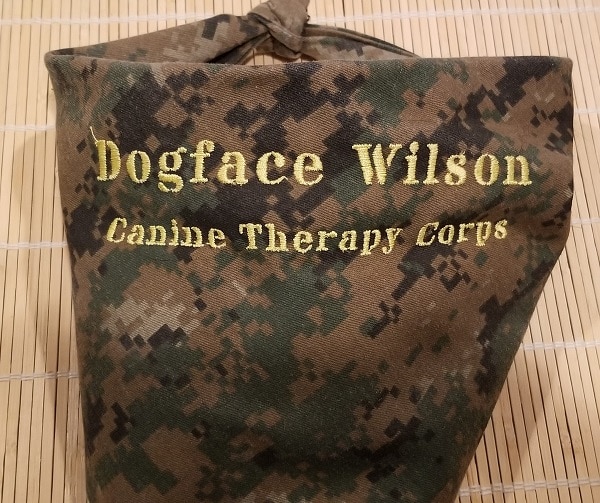



Military veterans are a notable segment of the clients our therapy animal teams serve across the U.S. The impact animal-assisted interventions (AAI) can have for veterans is so significant that in November 2019, Pet Partners signed an agreement with Veterans Health Administration (VHA) to set standards for AAI at VHA facilities and encourage more VHA facilities to incorporate AAI into their health care for veterans. We’re pleased to share this guest post from a Pet Partners therapy animal team about their experiences visiting with veterans at a VA medical center.
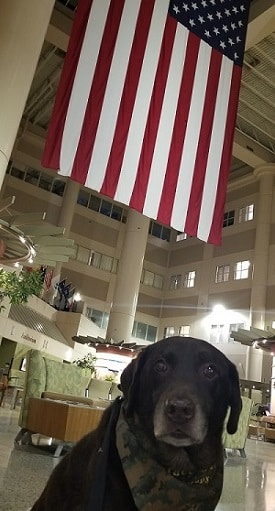
Beginning in 2013, my therapy partner Wilson and I began volunteering at the Minneapolis VA Medical Center. We were fortunate to get this opportunity, and I am doubly fortunate because I, too, am a veteran, having served 20 years in the U.S. Army. We were assigned to volunteer at the polytrauma unit. This unit helps rehabilitate brain or spinal cord injuries that are combat related, or the result of injuries such as strokes or vehicle accidents. We have had the opportunity to work with patients who were severely injured and those well on the way to recovery. Prior to COVID-19, we volunteered two times a month.
This assignment has been interesting in that each time it is unique. When we come to the unit, we are part of a regular patient group session run by a recreational therapist. The session provides an opportunity for patients to interact with one another, build their communication skills, work on thinking skills, or just be with others. The activities run the gamut from group discussion to group games, outings, and other activities. Wilson and I are essentially “one of the gang” during the session.
Generally, we start our visit in the group room greeting the veteran patients and others as they arrive—some walk in, some wheel themselves in their chairs, and some are wheeled in by staff. Our actions during the session can take a variety of forms. If the group is in a discussion situation, our job is to be part of the group but also to “float” from person to person, giving each veteran the opportunity to interact with Wilson while the general discussion continues. Wilson enjoys this and he’s developed a nice way of saying hello as we move about: he’ll gently nudge a hand or put his chin on a veteran’s leg. He’s learned that veterans give the best scritches and shoulder rubs….they just do!
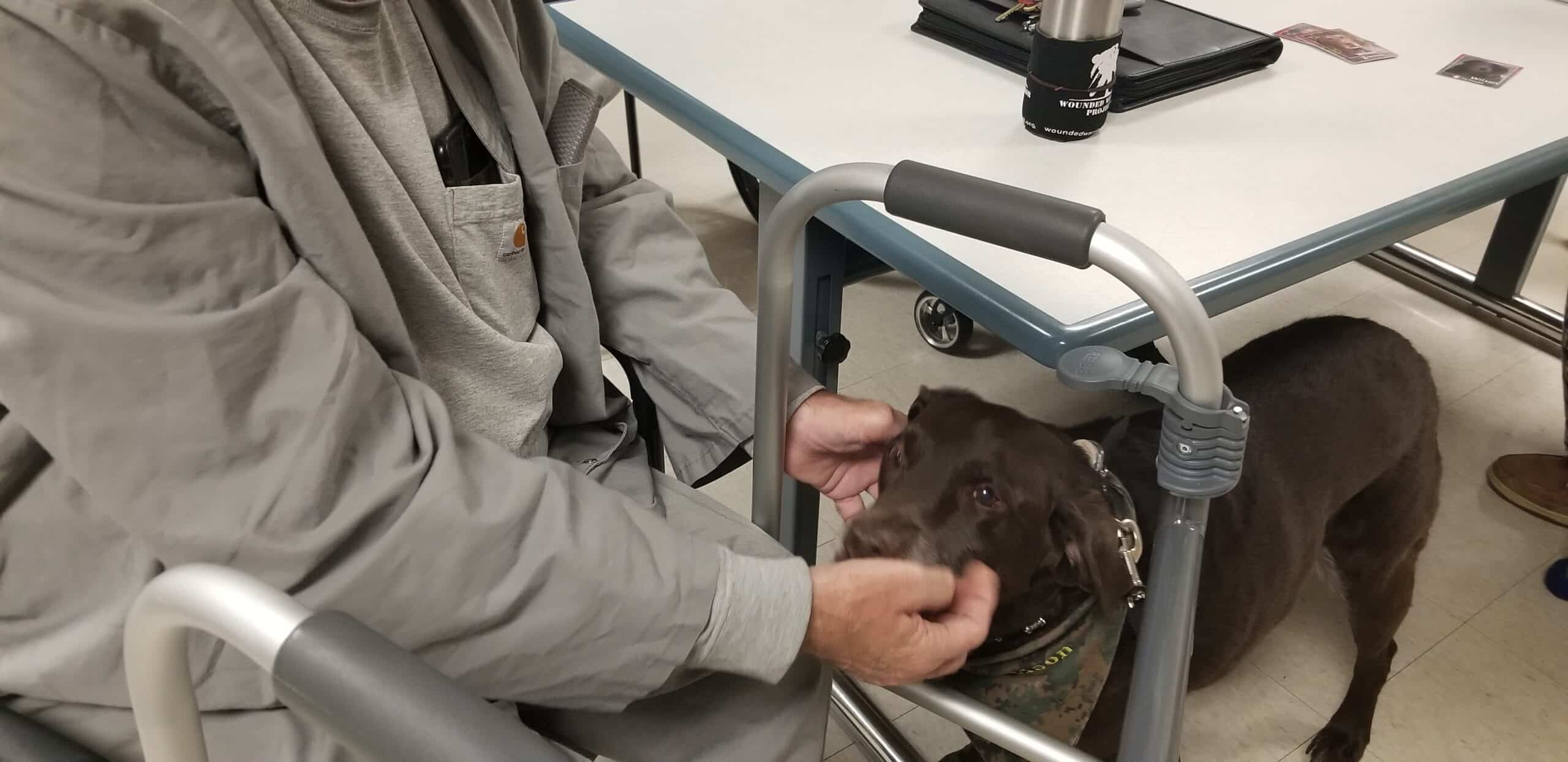
When we visit with patients who can communicate, we often hear about their current pet or former pet, or we can talk about whatever is on their mind. These vets often enjoy talking with us, especially when they know I’m retired military! At other times, we have been the center of attention for the group, telling Wilson’s story, answering questions, discussing what therapy dogs do and clarifying how they are different from service dogs. Wilson loves this: he’s the center of attention and gets scritches! What could be better?
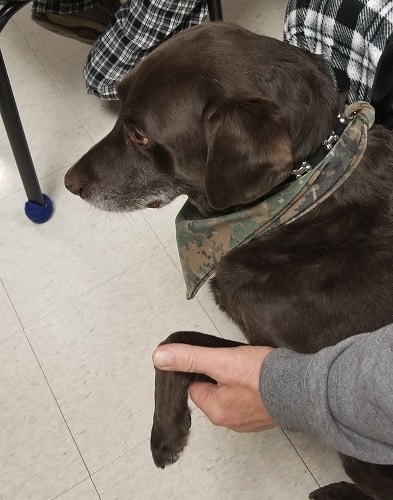
While the group sessions have been rewarding, there is a cadre of patients that Wilson has become especially adept at being with. These are the patients who are most severely injured; often they cannot move or speak, and might only be able to blink their eyes or make a sound in response to a question. They’re the ones that you see in the heavy-duty wheelchairs. Wilson visits with these patients in a remarkably interesting way. The recreational therapist will move a chair for Wilson next to a patient on one side, often based on if they can see on that side or have some ability to move on that side of their body. Wilson has learned that this is his signal to climb up on his chair next to the patient, often leaning into the patient, waiting calmly to see what the interaction will be. Will a hand be moved toward him? Perhaps a finger or two may rub his head, or maybe it will just be some grunts. It doesn’t seem to matter. Wilson has been known to stay next to a severely injured veteran for close to 20 minutes, sitting still while some clumsy petting is going on or just waiting while the patient works on reaching out with a goal of petting him.
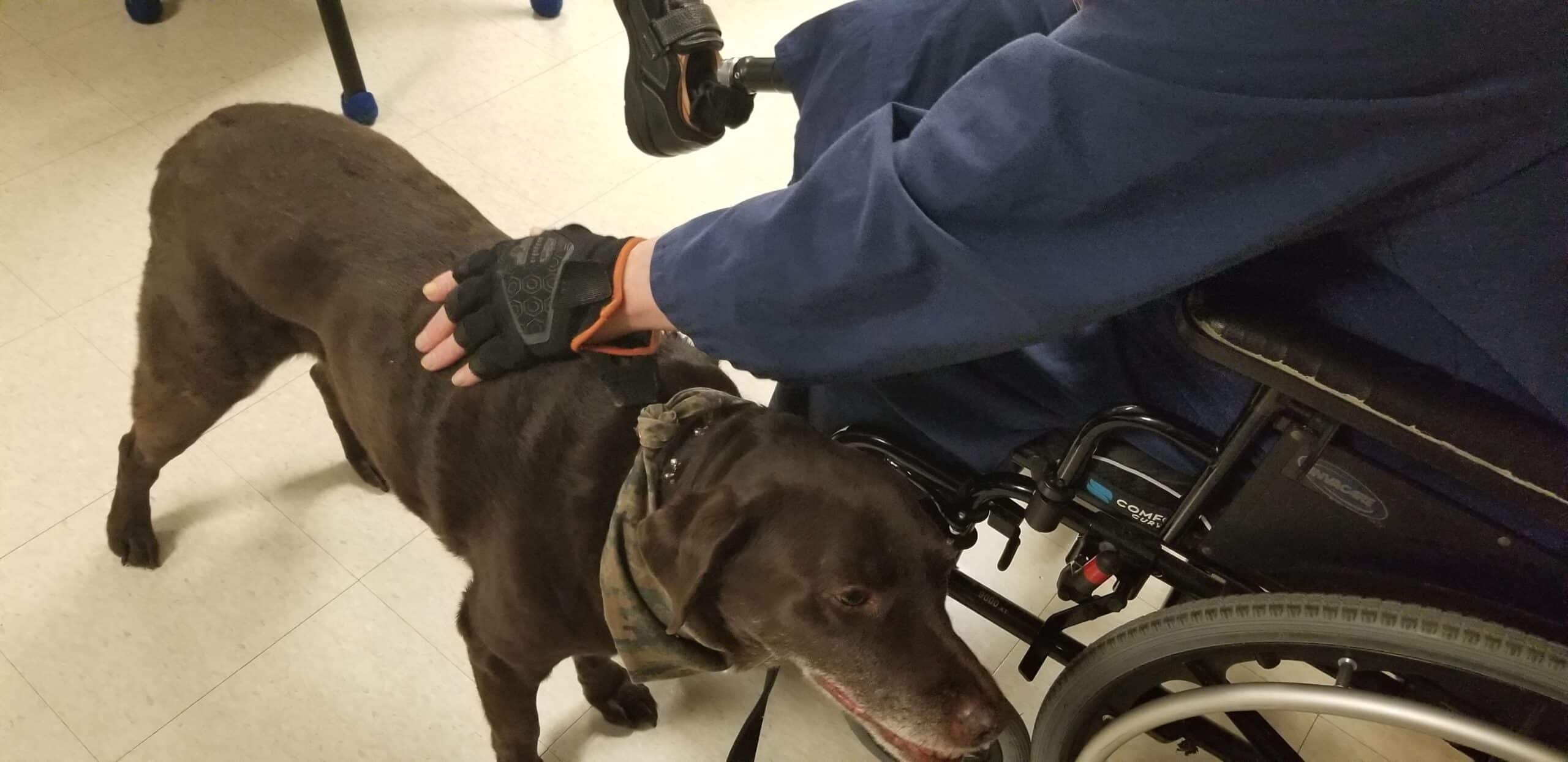
Wilson has also been involved in animal-assisted therapy (AAT) at the VA. One session is memorable in that we were there to help a young man learn to use his motorized wheelchair. I was told before the session that he had been resistant, angry, and wanted no part of this. Our role in the AAT was simple: Wilson was basically the “reward” if this young man could maneuver his chair down a hallway where Wilson was waiting for him. Wilson must have been a great reward because after a few false starts, this young man was rolling down the hall, in a big hurry, ready to greet Wilson. And, what a greeting it was! After the fact, I learned that this had been a turning point for this young man in his recovery and I was so moved I just cried.
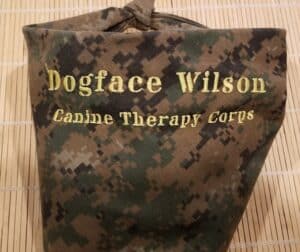
As I look on my experience working with my therapy dog partner at the Minneapolis VA Medical Center, I am honored and humbled to have had this experience. I often joke that Wilson does all the heavy lifting and I basically keep his calendar and act as his driver, but there’s truth to that sentiment. The presence of therapy animals cannot be understated. They have a magic all their own and, in their own way, share unconditional love. I am more than proud of how my partner Wilson has served our veterans, and I’m thankful for our time spent with them and the wonderful people at the Minneapolis VA. We have both missed our visits so much during the pandemic but are looking forward to when it’s safe to resume our visits at the VA.
And I am equally thankful to have found Pet Partners in 2011 when I was just learning about this idea of therapy animals, thinking about what this would be like, and wondering if Wilson would make a good therapy dog.
Photos provided by Cheryl Bann
Are you a current Pet Partners volunteer interested in supporting veterans in your community? Learn more about our VHA agreement and consider taking our continuing education course, Working with Veterans. The course is available to currently registered volunteers at no cost. To sign up, log in to the Volunteer Center and click Courses and Events.
The Working with Veterans course is also available to the public. See our Online Education page for more information.
Current volunteers interested in working with veterans may also want to consider our animal-assisted crisis response (AACR) credential. The AACR training prepares teams for responding in the immediate aftermath of a crisis event, but also provides education on working with people who have experienced trauma that can be valuable in visiting with many types of clients.